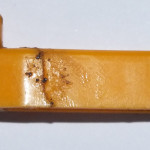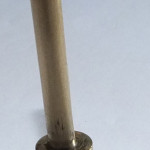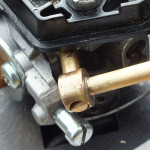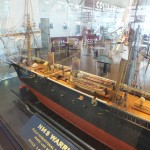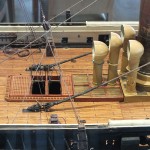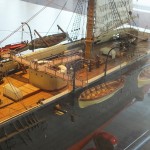Have been asked to restore a clock that was constructed by the owners father as a school project. The mechanism is brass and from a much earlier clock as revealed by the brass pendulum bob which is inscribed ‘St Paul’s Church’ and the rear of the mechanism body which is further inscribed with the names and dates of previous services.
The wooden body is mahogany and has been adapted from something else whilst the face has been hand made and painted by the father. When newly completed it would have been a very comendable school craft project.
It is the face of the clock wherein lies the restorer’s dilemma.
It didn’t strike me at first, but on closer examination something was not right. It was then that I discovered the number sequencing on the outer part of the dial was wrong.

Time Stands Still
From the top it went 60, 5, 5, 15, 20, 25, 30 etc.
Here is the question; do I restore the dial ‘as is’ complete with error or do I correct it? The owner was unaware of the problem (a question of the brain seeing what it wanted to see?), but has said they will leave it up to me!
This occurs time and time again when restoring someone elses work, do you rectify errors or restore them?
As theses items are rarely required for historical accuracy, but for the pleasure of the owner, then often the errors add to the charm of the model or item.
So, what to do in this case? Well, I think the solution is to conserve the exisitng dial as it is part of the clock’s charm. If the owner decides they want a correct dial then I shall make them a new one and they can keep the original for posterity.
As long as no one thinks the conserved error is actually an error on the part of the restorer!


